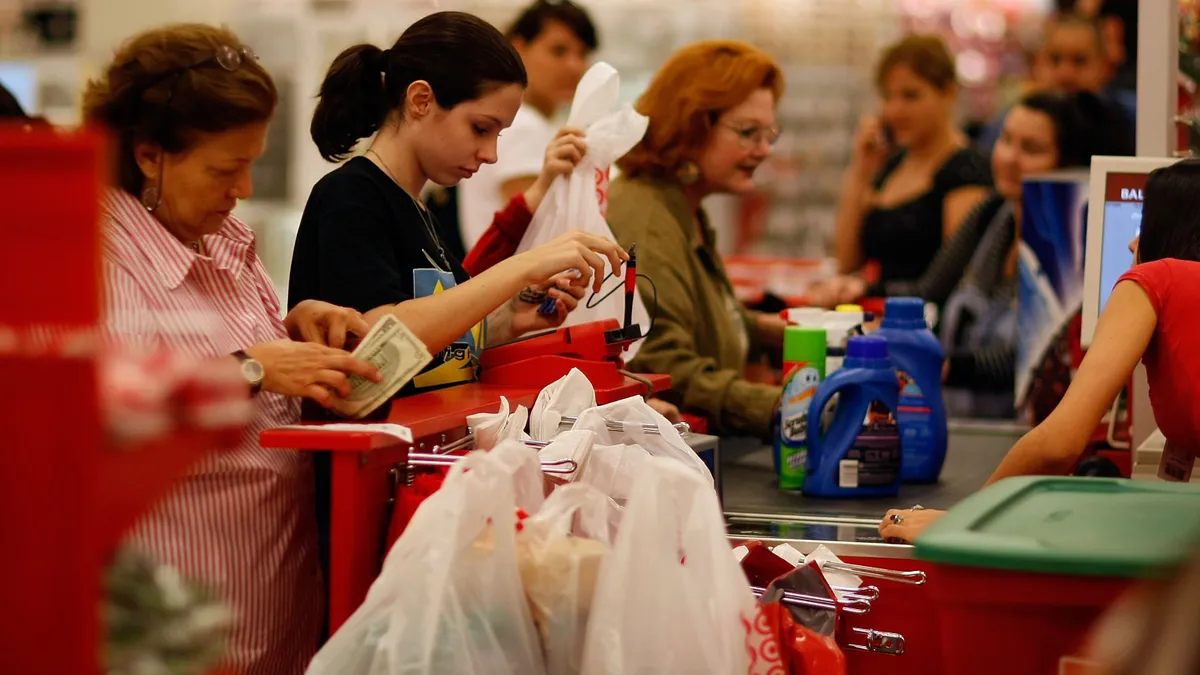Dive Brief:
-
U.S. retailers added 521,800 workers during the first two months of the 2016 holiday season, plunging 14% from year-ago totals, according to an analysis of federal employment data conducted by global outplacement firm Challenger, Gray & Christmas.
-
Retail employment grew by 371,500 jobs in November, down 9.3% from last year’s increase of 409,500, based on the latest data from the Bureau of Labor Statistics. That's the lowest November employment increase since 2010, Challenger said.
-
Employment gains were also slow in October, when retailers added an adjusted 150,300 jobs; the original count of 154,600 was 23% fewer than the 194,800 staffers hired in October 2015.
Dive Insight:
Retail jobs, like retail traffic, are moving online: Black Friday online sales alone rose nearly 22% to $3.3 billion, according to Adobe Digital Insights statistics.
That means that while jobs in physical stores are down, retailers filled 96,200 transportation and warehousing in October and November, up from 71,300 a year ago, according to the BLS data crunched by Challenger.
“As more and more shoppers move online, there is less need for extra workers in the brick and mortar stores. Even on Black Friday, once notorious for early-morning mob scenes at department stores, a growing number of Americans are staying home and finding great deals on the internet,” Challenger, Gray & Christmas CEO John A. Challenger said in a statement.
Challenger also said that the biggest job gains may be yet to come: Transportation and warehousing employment increased by 136,600 in December. That means that holiday job seekers should continue looking for work, he said.
“They must cast a wider net to include employers outside of the retail sector,” Challenger said. “However, even retailers continue to add throughout the holidays as high turnover in the industry requires nearly-constant recruiting activities. Last December, retailers added another 134,500 workers.”
Previous reports from the firm anticipated that seasonal hiring would be steady from last year’s lower numbers, and that was seen in many retailers’ hiring announcements, as was the shift from stores to e-commerce jobs. Some experts believe it’s a mistake to neglect brick-and-mortar hiring, though.
“E-commerce isn’t a stand-alone existence, or it shouldn’t be,” Nick McLean, CEO of order management firm OrderDynamics, told Retail Dive. “Retailers need to understand what the customer is trying to do. The ideal is to move more of it out into stores — move the inventory and the staff into stores.”
Having inventory in stores rather than in warehouses or distribution centers maintains physical retailers' essential advantages over their pure-play rivals — even when they’re fulfilling e-commerce orders. A winter storm, for example, might affect only a couple of stores, rather than blocking movement of a far greater volume of inventory from an entire warehouse, McLean notes. Getting customers to physical locations for in-store pickup creates upsell opportunities that e-commerce can’t duplicate, he adds. Moreover, shoppers often appreciate the ability to pick up an item in store rather than risk a late holiday delivery.
This story is part of our ongoing coverage of the 2016 holiday shopping season. You can browse our holiday page for more stories.













